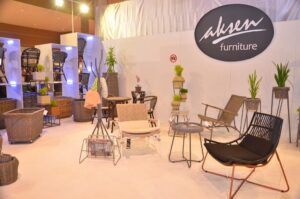Types and Varieties of Rattan: A Complete Guide to Rattan Species and Their Uses
Rattan is a versatile and highly sought-after material used in various industries, from furniture manufacturing to handicrafts and home decor. But not all rattan is the same. There are different types of rattan species, each with unique properties that make them suitable for specific applications. In this guide, we will explore the different types and varieties of rattan, their characteristics, and their primary uses.
What is Rattan?
Rattan is a group of climbing palms belonging to the family Arecaceae, primarily found in tropical regions of Southeast Asia, Africa, and Oceania. Known for its flexible and durable stems, rattan is often used in making furniture, baskets, handicrafts, and other decorative items. Unlike bamboo, rattan stems are solid rather than hollow, which gives them more strength and pliability.
Rattan species vary in thickness, flexibility, and texture, making it important to choose the right type of rattan for a specific purpose. Understanding the types and qualities of rattan can help you select the ideal material for your needs.

Different Types of Rattan
While there are hundreds of species of rattan, the most commonly used rattan types for industrial purposes can be categorized into three main groups: Core Rattan, Skin Rattan, and Split Rattan. Below are the different varieties that fall under each category:
1. Core Rattan (Heart Rattan)
Core rattan is the inner part of the rattan stem, which is typically lighter and softer. It is often used in products that require flexibility and ease of manipulation, like weaving and crafting. Core rattan is also used for making lightweight furniture pieces, as it offers both strength and pliability.
- Uses of Core Rattan:
- Rattan furniture (especially lightweight pieces)
- Handicrafts and small decorative items
- Basket weaving
2. Skin Rattan (Outer Rattan)
Skin rattan refers to the outer layer of the rattan stem. It is stronger and more durable than core rattan and is often used for making items that need to withstand heavier usage. The skin of the rattan stem is tougher and more resistant to wear and tear, making it an ideal choice for furniture and other durable products.
- Uses of Skin Rattan:
- High-quality furniture (chairs, tables, and sofas)
- Flooring and wall paneling
- Handrails, supports, and other structural applications
3. Split Rattan
Split rattan is obtained by splitting the outer layer of the rattan stem into thin strips. These strips are extremely flexible and can be woven into intricate patterns, making them perfect for detailed craftsmanship. Split rattan is widely used in furniture-making and for creating decorative items.
- Uses of Split Rattan:
- Intricate furniture weaving
- Storage baskets
- Home decor accessories like lampshades and picture frames
Other Varieties of Rattan
In addition to the core, skin, and split types, there are several notable rattan species used for specialized purposes. These include:
4. Manau Rattan
Manau rattan is one of the most well-known species of rattan and is commonly used in the production of high-quality furniture and other durable products. This type of rattan is thick and strong, making it ideal for structural applications. It is often harvested from the dense forests of Southeast Asia.
- Uses of Manau Rattan:
- High-end furniture
- Furniture frames and structural supports
5. Palasan Rattan
Palasan rattan is a species known for its straight, long, and sturdy stems. It is commonly used in furniture-making, especially for products that need to bear significant weight. Palasan rattan is typically used in both the construction of furniture frames and in decorative pieces.
- Uses of Palasan Rattan:
- Furniture frames and structural supports
- Decorative furniture pieces
6. Kubu Rattan
Kubu rattan, also known as grey rattan, is a distinctive type of rattan with a naturally grayish hue. This variety of rattan is often left untreated to retain its natural color. It is highly valued in the home decor industry for its unique aesthetic appeal.
- Uses of Kubu Rattan:
- Rustic-style furniture
- Baskets, trays, and decorative accessories
- Home decor items with a vintage or coastal feel
7. Tropical Rattan
Tropical rattan is a general term for various rattan species found in tropical climates. These types of rattan are known for their long, strong stems and are used in large-scale applications. Tropical rattan is commonly used for outdoor furniture and garden structures.
- Uses of Tropical Rattan:
- Outdoor furniture (chairs, tables, and lounges)
- Garden trellises, fences, and arches
Choosing the Right Type of Rattan for Your Project
When selecting the type of rattan for a project, it’s important to consider the material’s flexibility, strength, and aesthetic appeal. For furniture that needs to support weight and withstand daily use, skin rattan and species like Manau and Palasan are the best options. For crafts and decorative items, core rattan or split rattan would be more suitable due to their flexibility and ease of manipulation.
Conclusion
Rattan is a highly versatile and durable material, with a wide range of varieties suited to different purposes. Whether you’re interested in creating functional furniture, intricate home decor, or sustainable products, there’s a type of rattan that fits your needs. By understanding the differences between the various types of rattan, you can make an informed decision when choosing the best material for your projects.
Whether you’re a furniture manufacturer, a craftsman, or a homeowner looking to add a natural touch to your interior, rattan offers an eco-friendly, durable, and aesthetically pleasing solution. The wide variety of rattan species ensures that this material can be tailored to meet the needs of any project.

